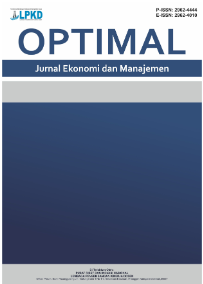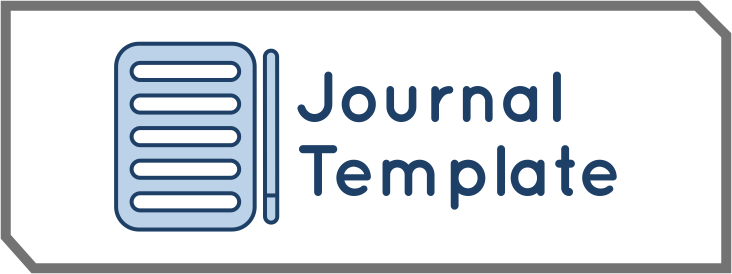From Entropy to Adaptability: Rethinking Leadership Decision-Making through the Lens of Personality and Preference
DOI:
https://doi.org/10.55606/optimal.v5i2.6459Keywords:
growth strategies, organic growth, inorganic growth, hybrid strategy, competitive advantageAbstract
In today’s highly volatile and complex global environment, growth has become a strategic imperative rather than a mere option. This study explores how firms navigate organic, inorganic, and hybrid growth strategies to achieve sustainable competitive advantage in VUCA (volatility, uncertainty, complexity, and ambiguity) conditions. Drawing on a systematic literature review of 52 peer-reviewed articles published between 2015 and 2025, this paper examines how internal capabilities and external opportunities are aligned through growth configurations. The findings indicate that organic growth fosters innovation depth, brand cohesion, and cultural alignment, while inorganic growth provides rapid access to markets, technologies, and resources. However, each approach carries unique risks—organic growth may be too slow in fast-changing sectors, while inorganic strategies may face integration and cultural challenges. Hybrid strategies, which blend both approaches, emerge as the most adaptive solution in dynamic environments, offering firms flexibility to combine speed with sustainability. Strategic fit, absorptive capacity, and organizational agility are identified as key enablers of growth effectiveness. This study contributes to the theoretical development of growth strategy from a dynamic capabilities perspective and offers practical guidance for organizations designing context-sensitive growth paths.
References
Ahlstrand, B., Lampel, J., & Mintzberg, H. (1998). Strategy safari: A guided tour through the wilds of strategic management. Simon and Schuster.
Bennett, N., & Lemoine, G. J. (2014). What VUCA really means for you. Harvard Business Review, 92(January–February), [halaman tidak tersedia].
Camisón, C., & Villar-López, A. (2014). Organizational innovation as an enabler of technological innovation capabilities and firm performance. Journal of Business Research, 67(1), 2891–2902. https://doi.org/10.1016/j.jbusres.2012.06.004
Christensen, C. M. (2015). The innovator’s dilemma: When new technologies cause great firms to fail. Harvard Business Review Press.
Drucker, P. (1999). Management challenges for the 21st century. HarperBusiness.
Drucker, P. (2012). Management. Routledge.
Eisenhardt, K. M., & Zbaracki, M. J. (1992). Strategic decision making. Strategic Management Journal, 13(S2), 17–37.
Handy, C. (1993). Understanding organizations. Penguin UK.
Ismail, A. I., Rose, R. C., Uli, J., & Abdullah, H. (2019). The relationship between organisational resources, capabilities, systems and competitive advantage. Asian Academy of Management Journal, 17(1), 151–173.
Judge, T. A., & Bono, J. E. (2001). Relationship of core self-evaluations traits—Self-esteem, generalized self-efficacy, locus of control, and emotional stability—with job satisfaction and job performance: A meta-analysis. Journal of Applied Psychology, 86(1), 80–92. https://doi.org/10.1037/0021-9010.86.1.80
Kirkman, B. L., Chen, G., Farh, J. L., Chen, Z. X., & Lowe, K. B. (2009). Individual power distance orientation and follower reactions to transformational leaders: A cross-level, cross-cultural examination. Academy of Management Journal, 52(4), 744–764. https://doi.org/10.5465/AMJ.2009.43669971
Lengnick-Hall, C. A., & Beck, T. E. (2005). Adaptive fit versus robust transformation: How organizations respond to environmental change. Journal of Management, 31(5), 738–757. https://doi.org/10.1177/0149206305279367
Lengnick-Hall, C. A., Beck, T. E., & Kulkarni, M. (2022). Developing a capacity for organizational resilience through strategic human resource management. Human Resource Management Review, 32(2), 100850. https://doi.org/10.1016/j.hrmr.2021.100850
McCrae, R. R., & John, O. P. (1992). An introduction to the five‐factor model and its applications. Journal of Personality, 60(2), 175–215. https://doi.org/10.1111/j.1467-6494.1992.tb00970.x
Mumford, A. (1992). Learning styles questionnaire. Organization Design and Development, Incorporated.
O’Reilly III, C. A., & Tushman, M. L. (2013). Organizational ambidexterity: Past, present, and future. Academy of Management Perspectives, 27(4), 324–338.
Roberts, B. W., Kuncel, N. R., Shiner, R., Caspi, A., & Goldberg, L. R. (2007). The power of personality: The comparative validity of personality traits, socioeconomic status, and cognitive ability for predicting important life outcomes. Perspectives on Psychological Science, 2(4), 313–345. https://doi.org/10.1111/j.1745-6916.2007.00047.x
Sadler-Smith, E., & Shefy, E. (2004). The intuitive executive: Understanding and applying “gut feel” in decision-making. Academy of Management Executive, 18(4), 76–91. https://doi.org/10.5465/AME.2004.15268692
Snyder, H. (2019). Literature review as a research methodology: An overview and guidelines. Journal of Business Research, 104, 333–339. https://doi.org/10.1016/j.jbusres.2019.07.039
Teece, D., Peteraf, M., & Leih, S. (2016). Dynamic capabilities and organizational agility: Risk, uncertainty, and strategy in the innovation economy. California Management Review, 58(4), 13–35. https://doi.org/10.1525/cmr.2016.58.4.13
Torraco, R. J. (2005). Writing integrative literature reviews: Guidelines and examples. Human Resource Development Review, 4(3), 356–377. https://doi.org/10.1177/1534484305278283
Yukl, G. (2013). Leadership in organizations (8th ed.).
Yukl, G., & Mahsud, R. (2010). Why flexible and adaptive leadership is essential. Consulting Psychology Journal: Practice and Research, 62(2), 81–93. https://doi.org/10.1037/a0019835
Zhang, X., & Bartol, K. M. (2010). Linking empowering leadership and employee creativity: The influence of psychological empowerment, intrinsic motivation, and creative process engagement. Academy of Management Journal, 53(1), 107–128.
Downloads
Published
How to Cite
Issue
Section
License
Copyright (c) 2025 OPTIMAL Jurnal Ekonomi dan Manajemen

This work is licensed under a Creative Commons Attribution-ShareAlike 4.0 International License.








